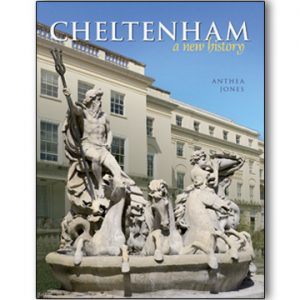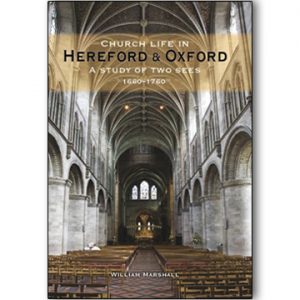Description
This fascinating book, by a leading historian of the city, tells Manchester’s story from the Romans to the first steam-powered factories, showing how the centuries before the Industrial Revolution formed the foundation for the city’s later greatness.
- From rich merchants and the slave trade to the food riots of the poor
- From how people lived and worked to how the town was governed
- From sanitation and disease to leisure and entertainment
- From buildings and maps to ideas and beliefs
- From uprisings against the Romans to street battles in the English Civil War
The Origins of Manchester is highly readable, scholarly, well illustrated and wide-ranging. It is certain to appeal to anyone with an interest in this great city.
Alan Kidd is Professor Emeritus at Manchester Metropolitan University. He has published numerous articles and books on the history of Manchester.
- Author: Alan Kidd
- Imprint: Carnegie Publishing
- ISBN: 978-1-85936-239-6
- Binding: paperback
- Format: 240 x 170 mm
- Extent: 128 pages
- Illustrations: 60+
- Publication date: 28 April 2023







Steve Collins –
As Alan Kidd points out in the Preface to this book, it is coming up to 30 years since his well-known history, Manchester, was first published. In it, he took 1780 as its starting point and traced the development of the first industrial city to the twenty-first century, a process necessitating regular new editions. This book neatly dovetails into that by beginning with Roman times and taking 1780 as its final destination.
The book is divided into five sections or chapters, the first four being strictly chronological, while the last, ‘Living in eighteenth century Manchester’, tackles a period which has been under-represented in the plethora of historical writing about the city. We open with ‘Mamucium: a Roman fort’, which looks at the area, c.2,000 years ago, ‘where the Medlock flows into the Irwell in what is now Castlefield’, and an artist’s impression of this fort and settlement (based on advice from Norman Redhead) graces the title page. Towns like Mamucium ‘were not planned but instead developed haphazardly over time in response to need.’ As well as garrisons, ‘they also acted as market places where local farmers sold their produce and traders dealt in manufactured wares.’ In fact, so settled did the town become, that Kidd ventures to speculate that ‘Mamucium was probably regarded as a peaceful posting for the Roman military’.
In the next section: ‘Mamecestre: a medieval market town’, it becomes apparent that there are questions about the exact location of the medieval town: whether it was on the site of the Roman settlement, or higher, near the present Cathedral and Chetham’s School of Music. Be that as it may, by the thirteenth century, the town was still small compared with Preston, Lancaster, Liverpool and Wigan. Power at this time was centred on the manor house and the parish church, particularly the latter in this case, and the development of the town’s parish church to collegiate and finally cathedral status, is one abiding and unifying feature of this book.
The central section of the book concentrates on the massive expansion of the town’s population during the early modern period, and more precisely, 1543-1660. Kidd outlines some of the historical methodology, the resources available to historians to enable them to estimate population size and growth. Various forms of source material are listed, for example ‘wills and inventories as well as official documents and state papers for the era’ The date 1543 refers to lay subsidy returns which ‘suggest that in the mid-sixteenth century, the population of the township of Manchester consisted of about 2,000 souls’. During the period covered by this central chapter, the figure doubled and Kidd goes on to make the point that, ‘despite the impact of war and plague … in 1660 Manchester was easily the largest and most populous town in Lancashire.’
The period 1660-1780 saw the roots of the industrial revolution form and take hold, and the author charts the rise and rise of Manchester in the forefront of this development. The population truly exploded during this period and with it the increase in importance of the town. The author analyses the details of this change and concludes that Manchester became ‘the conduit through which the textile districts of North West England connected and interacted with the national economy’, though he points out that ‘the precise reasons why Manchester achieved this status are still debated. There is no clear consensus on why this particular town was so important’. Kidd continues and develops this debate and examines the growth of the cotton trade and its effect on the social and economic success of the town. The question of the slave trade with reference to the town’s industrialisation is necessarily raised and extensively discussed in the section ‘Manchester, cotton and slavery’. This leads to the question of ‘what kind of town was Manchester becoming?’ which introduces the closing chapter of the book. We are made aware of the uneven distribution of wealth in the prosperous and ever-increasing urban sprawl; we see examples of opulent and wealthy lifestyles contrasted with food riots and strikes. Under the headings ‘Culture, leisure and society’ and ‘Politics, religion and authority’, a town of contrasts and divisions is brought into sharp focus with the Jacobite Rebellion of 1745. But these divisions were put aside and ‘by the second half of the eighteenth century, Manchester had become a provincial centre of the very first rank, already attracting fascinated interest for its urban growth, commercial life and transport innovations’, ready to emerge as ‘the first industrial city and a global symbol of the urban industrial revolution.’
The publisher’s ‘blurb’ on the back cover of the book – not always a reliable source of information – uses the words: ‘highly readable’ and ‘scholarly’. These two qualities are not always compatible, but in this case they are entirely accurate and Professor Kidd has once again managed to walk the tightrope between the academic and the accessible and produced a book which should be a necessary addition to the shelves of any reader who has more than a passing interest in the history of Manchester.
Finally, a word should be said about the many illustrations, which are superb throughout. The vast majority are in colour and feature notable buildings, especially Chetham’s Library, and the Cathedral (including fascinating details of some of the misericords), plus various maps and portraits of key figures. The production values are high, resulting in a top-quality book at a reasonable price.
– Steve Collins, Transactions of the Lancashire and Cheshire Antiquarian Society, Vol. 114 (2023)